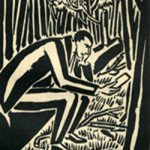
This album cover was done by Raymond Pettibon and the album contains punk and post punk. A true sampler which shows the best artist from the SST label. None is importnt for me personally, but what i do like is that the over art is done by Raymond Pettibon. For those interested in the contents of the album read this.


When punk had its second boom in the early `80s, the emerging art form of the compilation album was given birth and has remained with the genre to today. The east coast beat its chest with the faster-than-light Flex Your Head comp released by Dischord, while the west coast celebrated its fierceness with the mostly Californian Let Them Eat Jellybeans! out on Alternative Tentacles. Boston responded with the soundtrack to circle pits, This Is Boston, Not L.A.. Unfortunately, with these three pillars casting their influence on almost the entire punk and indie scene, some label-specific comps tend to get overlooked. This is a shame as SST’s The Blasting Concept (Vol. 1), released in 1983, features a great selection of early-to-mid-SST jams which feature the label at its most lean and angriest.
The album opens with a selection of early Minutemen tunes. This handful of tracks shows that while many labels were heading in a generic three-chord, minute-thirty direction, SST was signing artists that were unique and completely inimitable. In usual Minutemen style, the trio rips through tunes which are more sketches than full-fledged opuses, jumping and skittering around chords and across song structures with more ideas in two minutes than many bands have in an entire album. In contrast to the Minutemen, Black Flag dominates the flip side with a song headed by each of the three pre-Rollins singers. While the Watt/Boon/Hurley combination delighted in its delicate intricacies, the Greg Ginn-headed Black Flag explodes with skillful rage, wasting not a millisecond of time.
Complimenting Black Flag are Saccharine Trust and Stains, two other bands on the early LA punk scene. While time hasn’t been as kind to these two groups as Black Flag, the two singles included in the comp show that while Black Flag, the Germs and a few others might have been the most dangerous, the west coast had plenty of other groups who could not only hold their weight, but also were capable of adding a little bit of east coast flavor to the west coast sound.
While SST started out as a punk label, it would later incorporate other non-commercial music including heavy metal and even free-form jazz. Chuck Dukowski’s Wurm, featured in its second incarnation on this comp, shows SST recording, Sabbath-influenced metal that allowed The Duke to show off his bass mastery/savagery. While Wurm wore its influences in the open, Overkill would be one of the first groups to head in the newly emerging thrash direction. While later on the group became much more well-known in metalhead circles, on The Blasting Concept the band carefully balances the challenging weights of punk and metal, making one hell of a fist pounder.
Although post-punk began to develop almost as soon as punk itself developed, most of these late `80s heros began as straight-up punk outfits. Luckily for us, the comp features early versions of Hüsker Dü and the Meat Puppets. Both bands are caught amidst their transitions, when unusual song structure and thick riffs dominated their sound.
Creative arguments and financial difficulties would plague SST in its later years. These troubles make this document all that much more valuable. There once was a time when SST was a dysfunctional yet happy family united not by a common sound but by a common aesthetic. The 14 cuts on this platter feature SST at its prime when it made a bold statement wrapped in a provocative cover by the awesome Raymond Pettibon. Of course, it’s a waste of time to live in the past, but every once in a while it’s nice to remember a time when all our heroes were pals (even though they kinda hated each other then, too). text by John gentile, 2007






































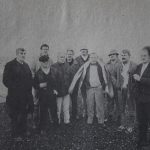
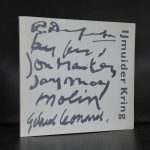
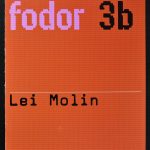
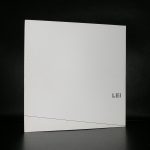




 has some nice Baumgarten publications available.
has some nice Baumgarten publications available.





